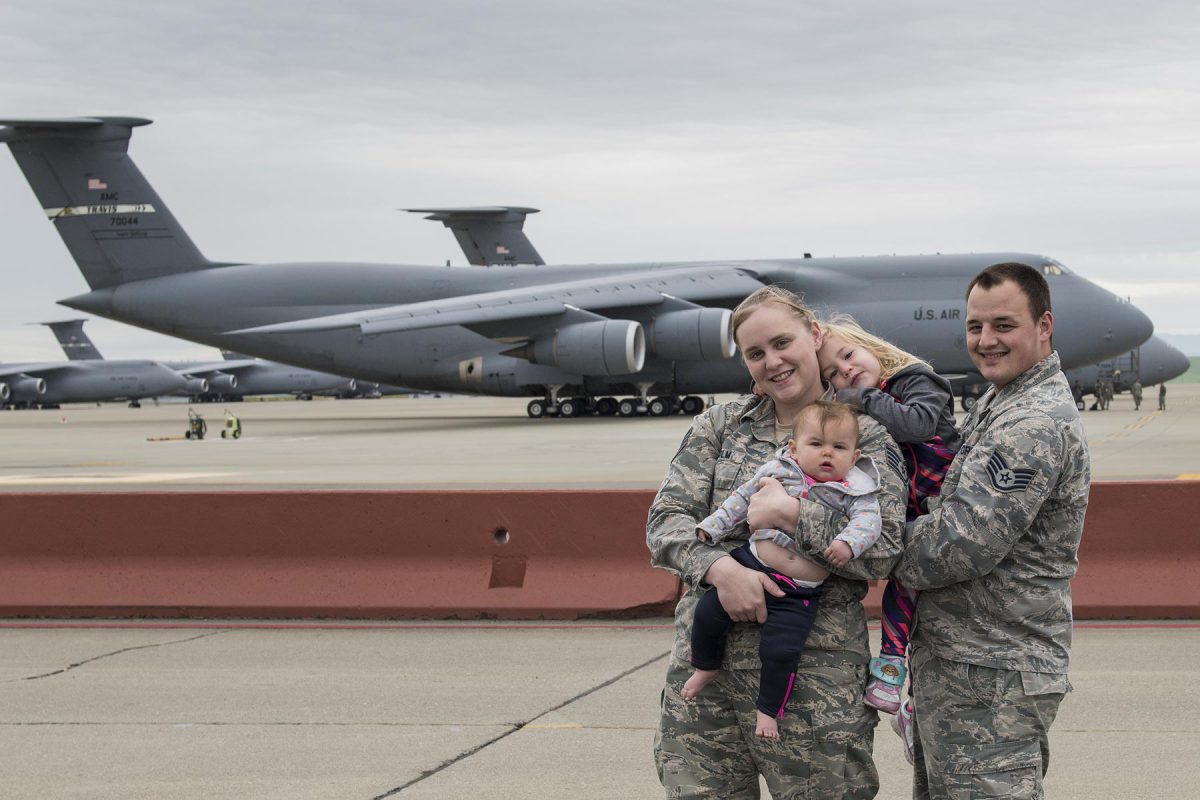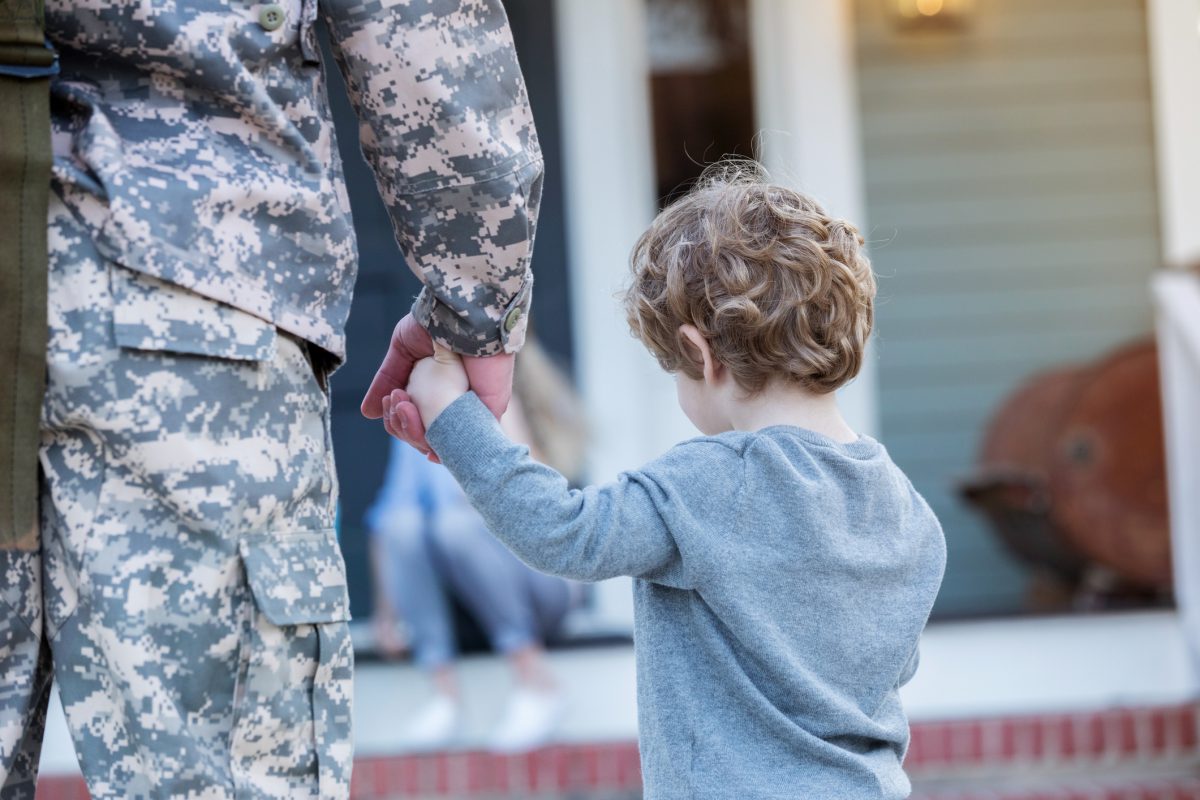When one military member marries another, the couple becomes a “dual military” couple, also known as mil-to-mil marriages. Different branches of service may use other terms.
Dual military couples are common, and the number of same-service couples may be larger than those who marry someone from a different branch of service. Army spouses, Air Force husbands and wives, Navy couples, Marine Corps families, and Coast Guard couples know there are more pay and higher allowances offered to married couples.
Here are some ways dual-military couples can benefit:
A “Hidden” Mil-To-Mil Couples Benefit
Assuming both halves of a dual-military spouse situation have put in the required time-in-service requirements to qualify to apply for a VA home loan, a dual military couple has some unique alternatives that a single service member does not have quite the same access to. What does this mean?
VA loans require you to have full VA loan entitlement for the loan. Generally, if you have never used your VA loan benefits before, you have 100% of your entitlement remaining once you have your VA Certificate of Eligibility.
Dual military couples have a choice to make when it comes time to apply for a VA mortgage. They can both use their entitlement for the loan, and the borrower’s financial commitment to the loan is matched by the amount of entitlement. If two members apply and both use their VA loan entitlement, they are both charged half of that entitlement.
But a dual military couple has the option to use only one person’s VA loan entitlement, which means the other spouse has the ability to apply for another VA mortgage later on (assuming the borrower is financially qualified to do so).
The option of two VA home loans is a definite advantage.
BAH Benefits For Married Troops
Consider the “with dependents rate” for BAH (the military housing allowance–a higher amount of housing money paid to the service member with one or more dependents. For this purpose, a spouse is considered a “dependent”, technically speaking). The single service member does not get this elevated rate, only married couples (dual military or not).
When a mil-to-mil couple draws BAH, a table is required to determine the couple’s BAH rates (per individual). Federal regulations governing BAH are found in the government publication Joint Travel Regulations, Chapters 8 through 10, which includes guidance on how BAH is paid to dual-military couples.
In mil-to-mil couples without dependent children, both spouses are paid without the dependents rate. If the couple has children, one spouse receives the with-dependent BAH rate, the other gets the single-rate BAH.
Better Housing For Married Troops
The housing situation for Airmen, Sailors, Soldiers, and Marines can be much improved over life in the barracks; married couples are not subject to the same kinds of living quarters inspections and communal living considerations that single service members have to deal with.
And the higher your rank, the better options you may have open to you depending on location and other factors.
Consider a typical military assignment to a new base where there is plenty of on-and off-post housing to choose from. An enlisted service member in the ranks of E1 through E3 (and in some cases E4s with less than four years of service or some similar standard) is not permitted to live in the local community. These troops are usually required to live in the barracks.
Married couples in the same rank/time-in-service situations are not subject to these requirements unless they are sent to an unaccompanied assignment where the family will not live.
Married troops (dual military or not) have choices that include privatized, on-base housing, as well as housing in the local community. Dual military couples don’t get any additional consideration in this area, but as it stands the housing situation is greatly improved for the married couple.
It should be pointed out here that the “better housing for couples” is not an intentional effort or policy by Defense Department leaders to offer married service members a better lifestyle, but in many areas, married couples do reap the benefit of their situation and the military’s willingness to provide higher allowances, better housing, etc.
Food Allowances: Basic Allowance For Subsistence
Depending on where you are assigned, the cost of living in the area, and other factors, you and your dual military spouse may qualify to draw an allowance known as BAS, the Basic Allowance for Subsistence. BAS is intended to aid meal costs for service members. Both halves of the mil-to-mil couple can draw this allowance, effectively doubling it.
Child Care Issues For Mil-To-Mil Couples
The military does not have a specific policy that offers childcare benefits to married couples.
All families are required by their branch of service to provide documentation outlining a childcare plan for contingencies such as deployments, TDY, etc.
One of the biggest advantages of being a military parent is the ability to use on-base childcare options such as Child Development Centers, Family Child Care offered in regulated private on-base homes, etc.
Childcare expenses are huge challenges for families, and CDC costs are based on rank among other factors. Lower-ranking (and lower-paid) enlisted service members won’t carry the same financial burden their more experienced and higher-ranking co-workers will.
In this area, the dual military couple has a distinct advantage. DoD school centers may prioritize dual-military family enrollment. There may be other resources DoD might offer as well. Check with your Family Readiness Group or Work Life Program for information to support you and your children’s transition.
Join-Spouse Or Joint Spouse Assignments
Military members often get reassigned to a new military base, installation, or even a deployment without the option to bring families along (i.e., military duty in parts of South Korea are “no dependents” tours, and all deployment situations are strictly “no dependents”.)
When a dual military couple faces the next round of PCS orders, they have the option to apply for a Join Spouse or Joint Spouse (the preferred term of the Air Force) assignment so that both can be given PCS orders to the new gaining base.
This is not always possible, and some reassignments involving mil-to-mil couples have them assigned to different bases roughly within a 100-mile radius or less. There are instances of mil-to-mil couples who have been deployed to war zones together or those who wind up in the same country at the same time but have to commute to be together.
Military couples must keep in mind that they are subject to the needs and whims of the military assignment system and it is best to have a detailed conversation with your detailer, Senior Chief, Chief of Personnel, or any other position that may have a direct effect on where you are assigned next as a couple or as an individual.
Ask the advice of your current assignments person to learn how to apply for joint assignments, but also talk to your unit orderly room to discuss how to claim the higher rates or added allowances if you are soon to be married, or recently married and in need of an update to your military records.
When You Cannot Be Assigned Together As A Mil-To-Mil Couple
Plenty of military blogs discuss the benefits of the Join Spouse assignment option, but not everyone gets to take advantage. The mission comes first and the needs of the military may not include letting a mil-to-mil couple be reassigned to the same base.
In such cases, there is a Family Separation Allowance you may qualify for as a married service member (even if you are not a dual military couple). However, there are specific rules for claiming this allowance as a dual military couple:
- You must be sent away from your family for more than 30 days due to receiving military orders.
- The couple must be living together as a couple before the duty begins.
- Only one person in the dual military couple can receive the allowance.
- A dual military family that receives orders for each spouse is paid only once, to the highest-ranking service member of the couple.
Double Retirement Pay For Dual Military Couples
This does NOT refer to a special program offering to double military retirement pay for mil-to-mil couples; at the time of this writing, such a program does not exist.
However, assuming both military members choose to remain in uniform until retirement-eligible, it’s easy to see that when both spouses draw military retirement pay, that effectively doubles the amount assuming the time-in-service, time-in-grade, and other variables match up.
Mil-to-mil couples who do not retire at the same rank and time-in-service (among other variables) may not draw the exact same amount of retirement pay.
Other Factors You Should Know
The benefits of being a dual military couple can include being assigned together, drawing higher allowances (the “with-dependents” rate), getting better housing options, and better retirement pay numbers (assuming both spouses retire from military service).
But being a dual military couple has downsides, too–it’s important to anticipate these as much as it is to know your benefits and making sure you take everything you are entitled to.
Some military-related blogs have encouraged dual-military couples to do things like apply for reassignment to the highest-cost-of-living areas possible to maximize BAH payments and other benefits.





